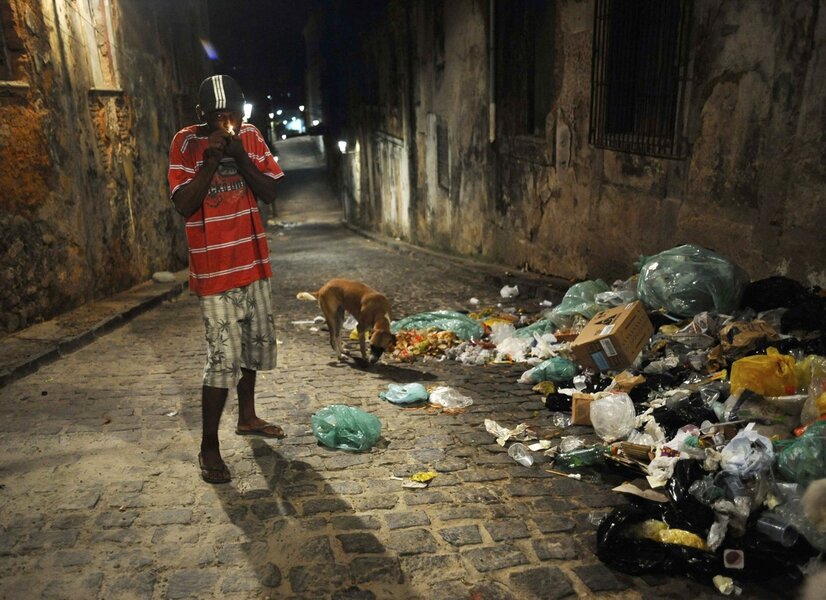Lift Latin America's 'drug curse'
Loading...
At a summit this weekend with Latin American leaders, President Obama is expected to get an earful about the region’s “drug curse.” Many in the region seek alternatives to the decades-long, US-backed crackdown on drug growers and traffickers.
At least one attendee at the Summit of the Americas, Guatemalan President Otto Pérez Molina, even wants to discuss legalization of drug use.
These leaders are tired of the drug-related violence and corruption that corrodes their democracies, especially in Mexico and much of Central America. About 15 percent of Latin America’s economy is lost to violence generated by organized crime, according to the Inter-American Development Bank. In Mexico, drug-related killings have reached 50,000 since 2006.
Fighting the flow of drugs – mainly to users in the United States – has had only one relative success. Colombia was able to beat back its powerful drug cartels.
But that effort took a decade and more than $6 billion from the US. And Colombia now realizes that lifting the drug curse has not eliminated a basic motivation for people to enter the drug trade: a lack of economic opportunities among its poor.
Low-level drug gangs still hold sway in some Colombian cities, such as Medellín. They fill a vacuum left by an absence of government assistance in creating jobs or providing a legal system for collecting debts.
Instead of abandoning antidrug tactics, Latin America needs to focus more on its economic and social problems as a way to dampen the drug trade.
It has a strong record to build on. Over the last decade, 73 million people in the region have moved out of poverty. Social inequality has been addressed by a variety of programs, such as job training for youths or giving cash to poor families if they educate their children.
Free-trade deals, such as those the US recently inked with Panama and Colombia, help boost capital investment. And in countries that are a source of cocaine or marijuana, many farmers are offered opportunities to grow legal crops of similar value.
But the region still needs to battle corruption, improve tax collection, raise educational standards, and make industries more globally competitive.
The US might be able to assist more than it already does, especially as it now spends about $100 million a year on drug interdiction and law enforcement in Latin America.
But the region cannot become impatient with the current antidrug strategy, blaming the US for supporting it, while ignoring the continuing incentives for people to enter the trade. And moving toward drug legalization is a surefire way to bring even worse problems, as Obama administration officials point out.
The summit’s best outcome would be a renewal of joint efforts to reduce poverty and the region’s high income inequality – and to keep cracking down on illegal drugs.





